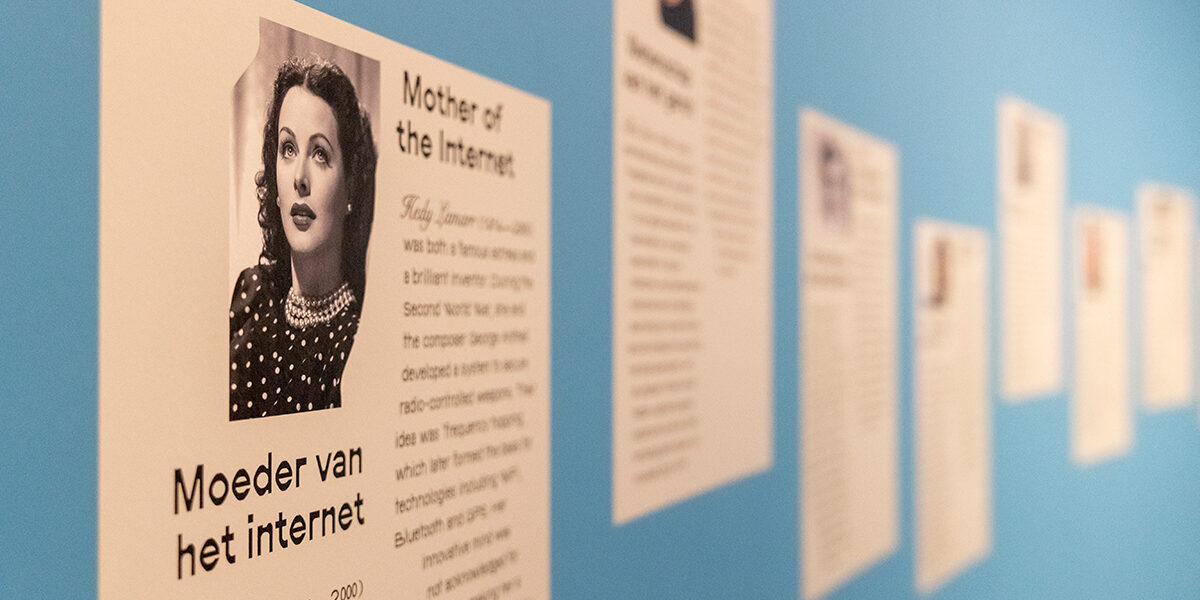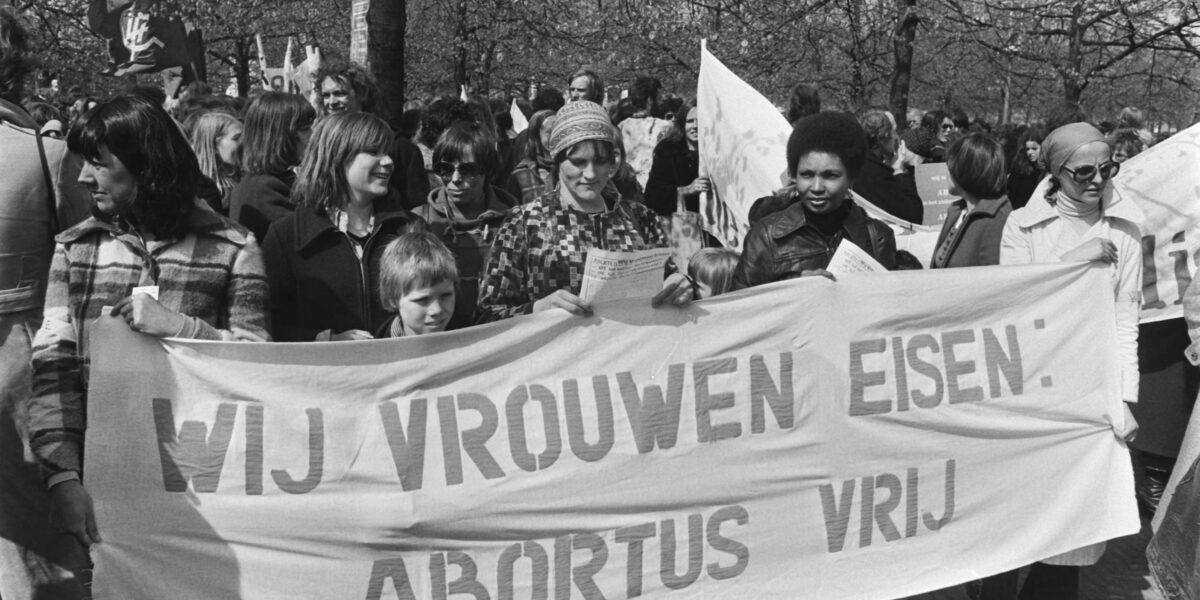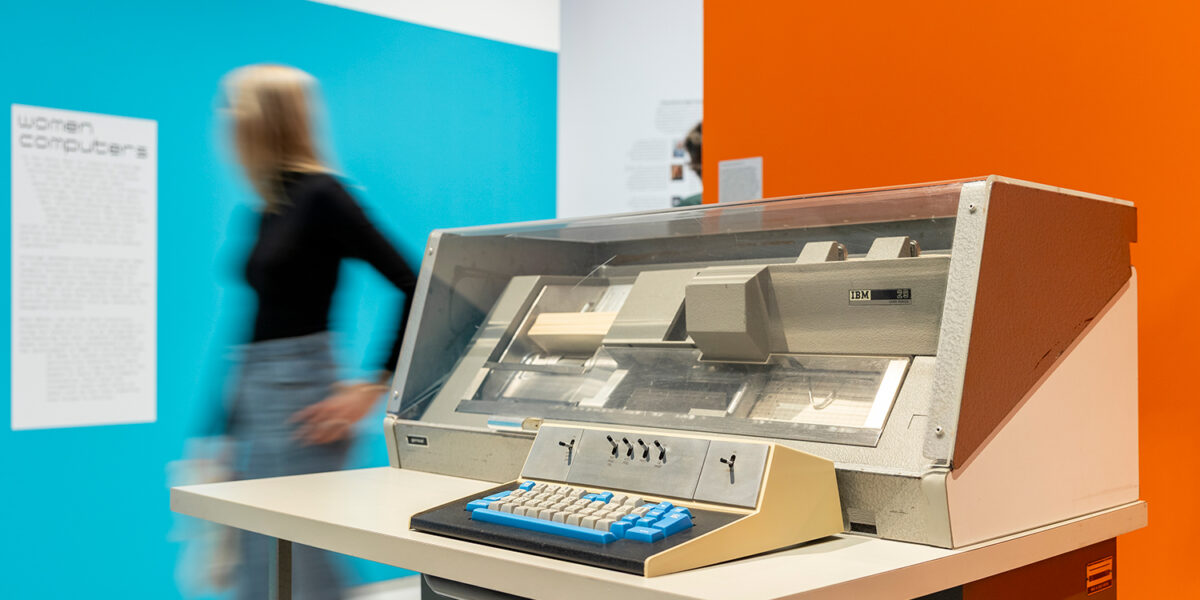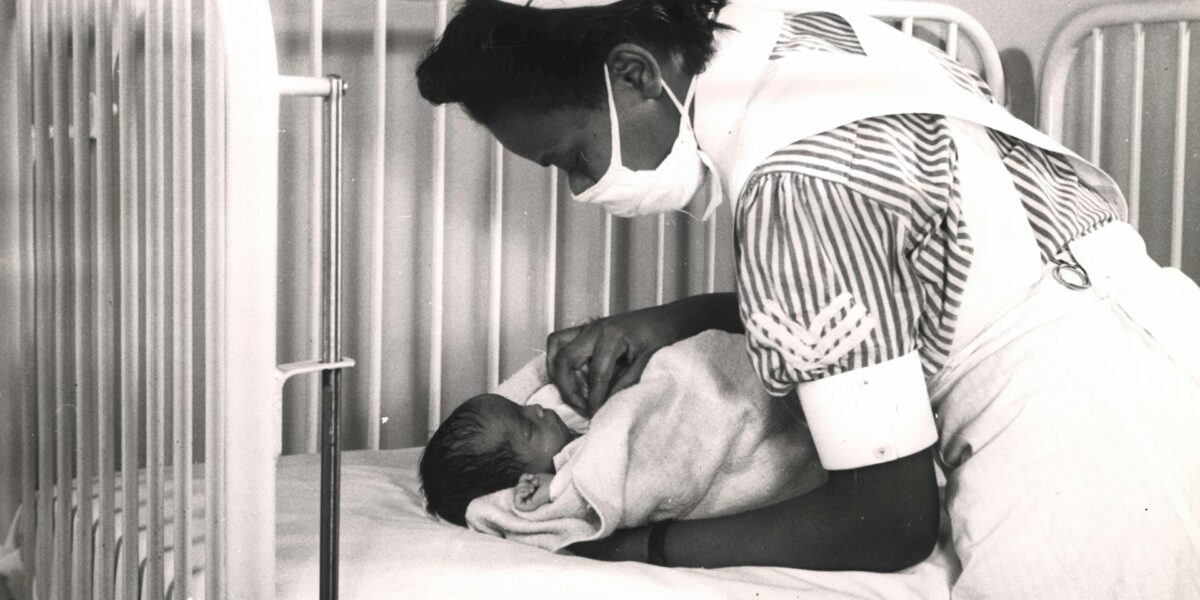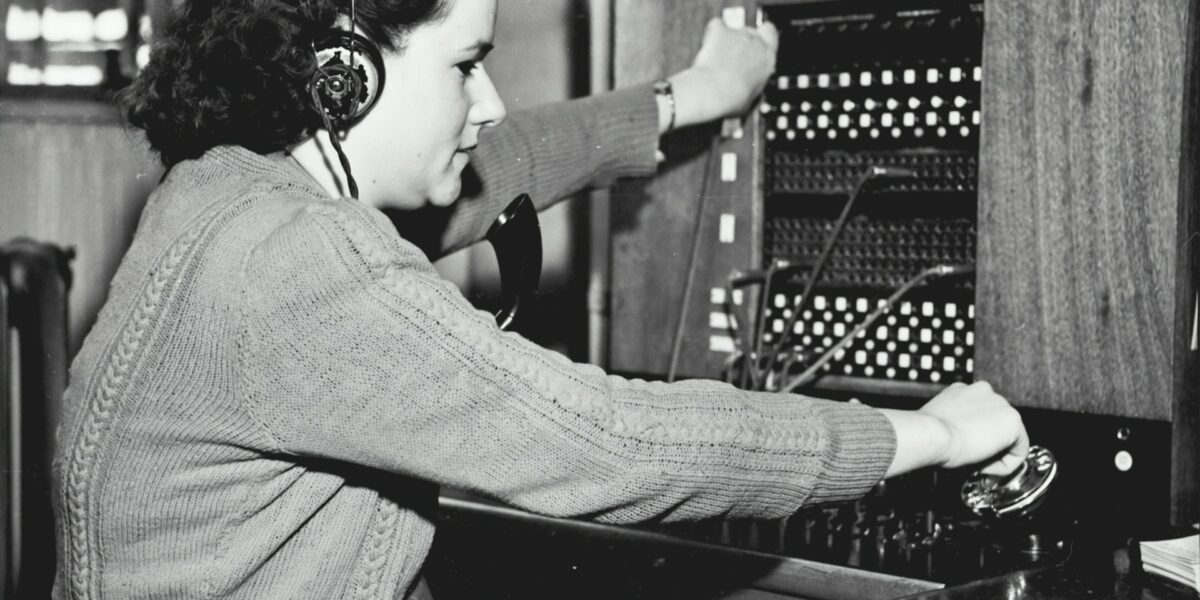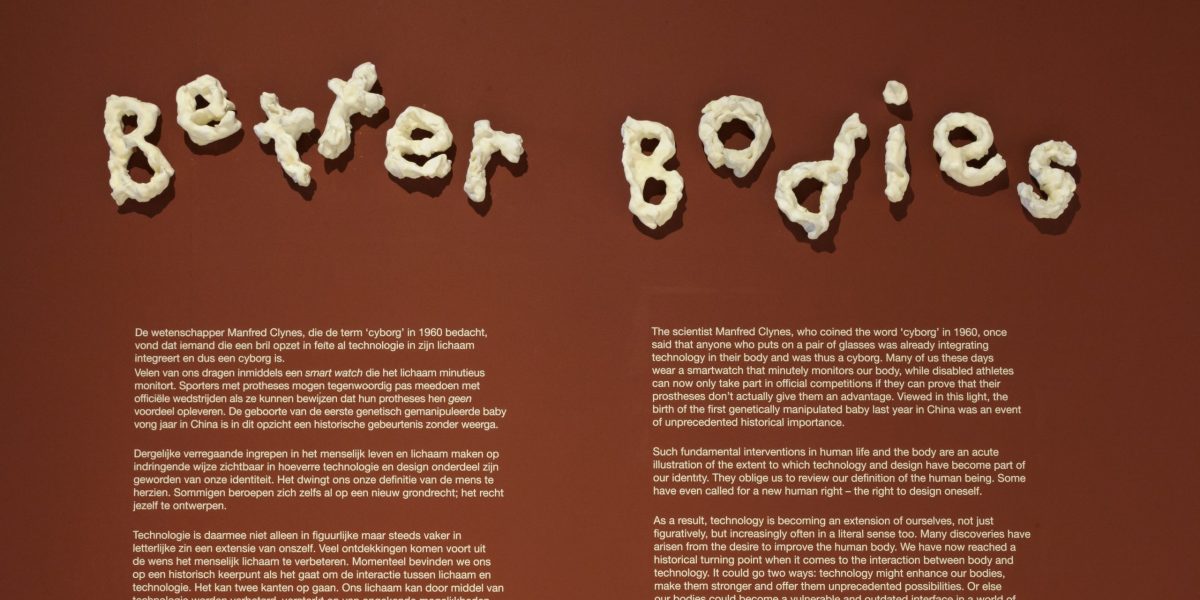Although domestic technology is seemingly designed to reduce work, it has mostly served to heighten the existing division of roles within the home. The work does not disappear, but the way it is organized changes. Since the industrial revolution, paid work outside the home was allocated more and more to men, leaving women unpaid and responsible for a household configured along increasingly professional lines. The Dutch Labour Act of 1919 and the ‘marriage bar’, which forced women to resign when they married, added legal force to this division of roles.
Text continues below the image.
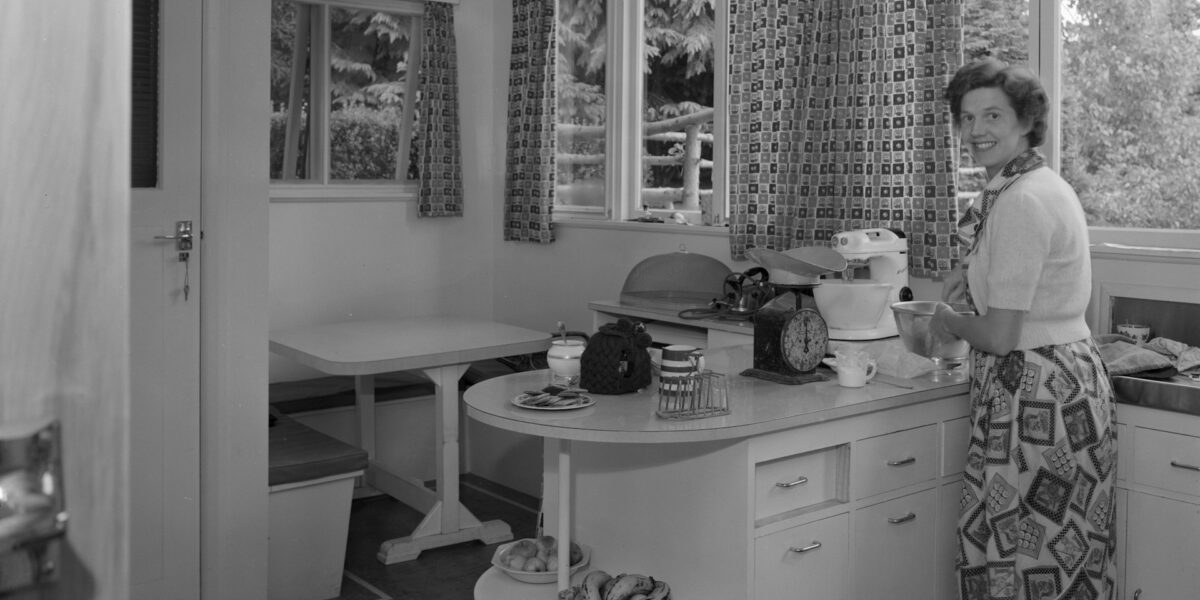
Mrs Mitchell, Rimu Street, 1951-1957, Wellington, by J.W. Chapman-Taylor. Te Papa Tongarewa.
The nuclear family became the cornerstone of society. Technology did not liberate women, it merely made them more efficient in their allotted role. Influenced by the efficiency movement and organizations like the Dutch Housewives Association, the home was turned into a tightly organized factory, in which the woman was the sole worker. While devices presented as ‘electric servants’ made some tasks easier, they also raised expectations and pressure to be more productive.
The crisp, wrinkle-free apron that was once the housemaid’s uniform, now came to symbolize the modern housewife, depicted in advertisements as a multitasker, often smiling and effortlessly wielding the latest appliance. Technology was presented as an extension of her care and dedication rather than as an instrument of shared responsibility.
Second-wave feminism in the 1970s and 80s challenged domestic inequality. Women demanded recognition for their unpaid work and a fair distribution of caregiving duties. Technology could only be seen as liberating if men took responsibility too. This is still an issue today: while many women combine paid work with caregiving tasks, domestic chores often remain unequally divided. Many appliances continue to be designed with the housewife as the intended user – a stubbornly persistent image.
The home as factory
Taylorism was extended to the home in the early 20th century with the aim of making domestic work more efficient. The system focused on the optimization of labour by analysing working processes and eliminating unnecessary movements. Its principles were applied to efficient kitchen design by the likes of Lillian Moller Gilbreth (1878–1972), Margarete Schütte-Lihotzky (1897–2000) and Piet Zwart (1885–1977).
Time-and-motion studies and interviews with housewives were used to analyse how kitchens could be made more practical. Gilbreth introduced the ‘Kitchen Work Triangle’, in which stove, sink and worktop were strategically positioned to reduce unnecessary movements. Schütte-Lihotzky designed the ‘Frankfurt Kitchen’, equipped with a swivel stool, gas cooker, built-in storage, fold-out ironing board and adjustable ceiling lamp. Zwart, meanwhile, developed the first kitchen for mass production, with carefully selected materials such as stain-resistant beechwood and a pull-out worktop. It was tailored to the average woman, with work surfaces at the correct height and space for just one person.
The design emphasized the woman’s sole responsibility for the household, illustrating how the scientific approach to domestic duties improved her working conditions while simultaneously reaffirming her role as housewife. As the manager of her home-factory, the woman became an indispensable cog in a well-oiled machine that never stopped.
I can keep house
The American home economist Christine Frederick (1883–1970) published the principles of The New Housekeeping in 1913. Her ideas resonated in the Netherlands too, courtesy of influential women like Riek Lotgering-Hillebrand (1892–1984) and M.G. Muller-Lulofs (1854–1954), who published an adapted Dutch version in 1928.
Frederick was inspired by the industrial efficiency movement, causing her to address household work as a form of scientific management. Her methodical approach was taught in domestic science schools, which trained girls to organize the household rationally and systematically. Keeping house thus became a profession in its own right, albeit one that remained unpaid, despite its enhanced status. As a discipline, domestic science adopted a heavily didactic tone when defining the role of the housewife.
Similar thinking reasserted itself during post-war reconstruction in the 1950s, when a well-organized household was considered essential to a stable society. Books like Ik kan wonen (‘I Know How to Run a Home’) offered practical know-how and skills, while presenting the housewife as the linchpin of family life. This approach reinforced the role of women as central figures in the home and as an important part of the broader economic and social recovery following the Second World War.
More work for mothers
Before the advent of electrical appliances, domestic tasks were performed by hand. Onerous and time-consuming, they were carried out by several members of the family or – in affluent households – by servants. The first appliances did not make the work much easier: they were large, factory machines with heavy levers, which only automated certain parts of the task.
The technology was adapted, however, as the middle class expanded in the early 20th century and women assumed even greater responsibility for running their homes. Appliances became smaller, lighter and easier to use, perfectly aligning themselves with the housewife’s daily routine. Advertisements presented these new devices as ‘electric servants’. It became increasingly easy – and expected – to maintain a spotless home. As household chores became less onerous, standards rose accordingly, with the housewife responsible as ever for managing her home.
Criticism of this idealized image grew steadily louder in the 1960s and 70s. ‘Mother’s Day: the day of the eight-armed automaton’ is a pamphlet illustration showing a mother with eight arms performing several household tasks at once. Her depiction as a multitasking machine highlights the fact that rather than liberating women, technology turned them into more efficient workers, perfect for housekeeping and nothing else.
Her uniform
With the advent of the professional household, the apron was transformed from maid’s uniform into a symbol of the housewife. Like other uniforms, it bestowed a collective identity and conveyed a deeper ideological meaning.
The simple white linen apron once worn by the maid stood in sharp contrast with the post-war American ideal of the housewife: a woman in a perfectly ironed, floral and ornate apron taking care of her family and guests. Advertisements and magazines invariably depicted women in aprons, running the home and devoted to their husbands. This reinforced the image of housewife as respectable role – an ideal that women ought proudly and gratefully to embrace.
The same American ideal also had its adherents in the more austere Netherlands where, in advertisements and TV shows, the housewife in her neat apron was the epitome of modern housekeeping. With a smile on her face, she kept the day-to-day affairs of the home in perfect order, always at the service of her husband and family. This idealized image became part of a broader societal norm, in which the housewife was positioned as the ultimate nurturing figure. In this way, the apron became a status symbol that confirmed and reinforced the role of women.

